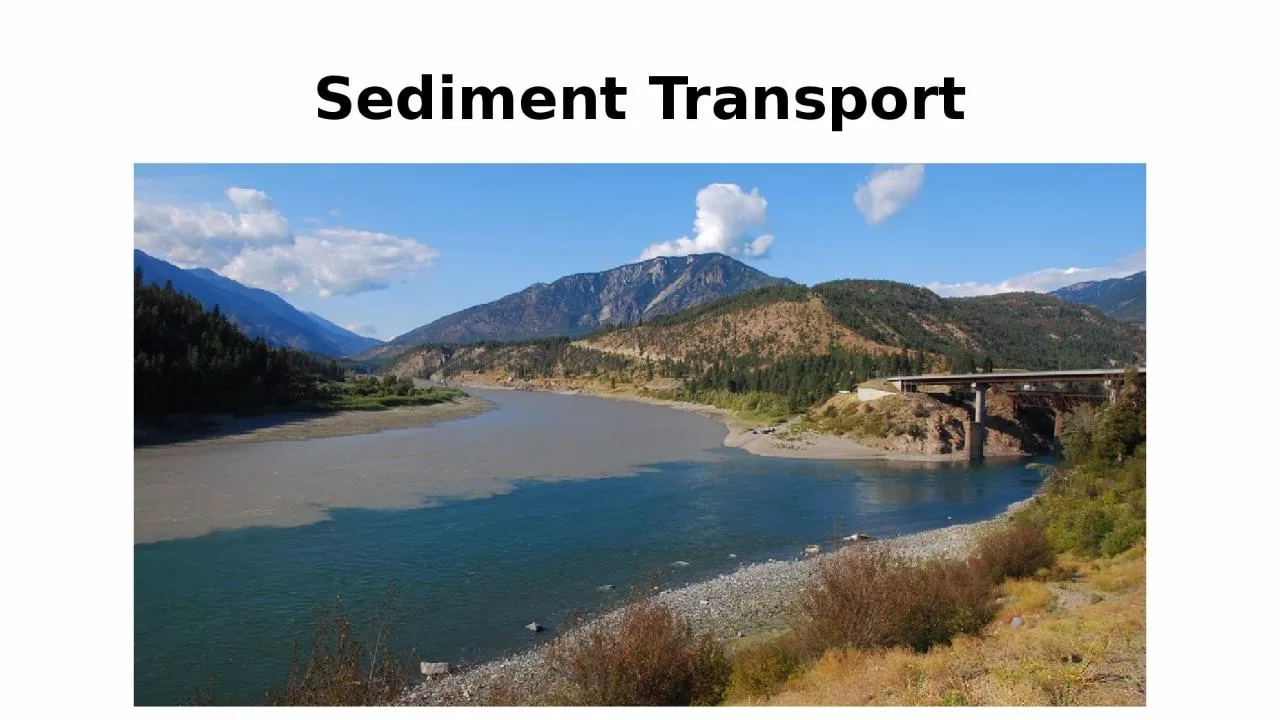

Bedload particles roll slide or bounce along bottom Suspended load particles carried above bottom by fluid turbulence and grain collisions dispersive pressure What is the significance of grain size ID: 1021348
Download Presentation The PPT/PDF document "Sediment Transport Flowing water transpo..." is the property of its rightful owner. Permission is granted to download and print the materials on this web site for personal, non-commercial use only, and to display it on your personal computer provided you do not modify the materials and that you retain all copyright notices contained in the materials. By downloading content from our website, you accept the terms of this agreement.
1. Sediment Transport
2. Flowing water transports sediment as:Bedload – particles roll, slide, or bounce along bottomSuspended load – particles carried above bottom by fluid turbulence and grain collisions (“dispersive pressure”)
3. What is the significance of grain size?What do sedimentary structures tell us about flow conditions?Controls on grain movement during bedload transportRelationship between bedform type and flow conditions
4. What forces act on a sediment grain in moving fluid?GravityForces hindering movement Forces promoting movementFluid DragLiftFriction and Electrostatic+-
5. GravityForces hindering movementForces promoting movementFluid DragFR = m gResisting force due to inertia:Simply mass × gravity, but grain mass is awkwardFR = 4/3 p r3 (rgrain – rfluid) gReplace mass by volume and densityFR = Z1 D3 (rgrain – rfluid) gCombine constants into single term Z
6. Egrain = ½ V (rfluid) u2Mass is volume × densityFM = Z2 A (rfluid) u2Energy is force × distanceFM = Z2 D2 (rfluid) u2GravityForces hindering movementForces promoting movementFluid DragFluid velocity necessary to create moving force:
7. At initiation of grain movement, inertia = fluid dragFM = Z2 D2 (rfluid) u2FR = Z1 D3 (rgrain – rfluid) g GravityForces hindering movementForces promoting movementFluid Drag=
8. Relationship doesn’t apply at fine grain sizes because Shields’ criterion doesn’t account for friction or electrostatic forces Shields’ CriterionDescribes the maximum particle size (D) that can be moved by a current of velocity u – called the competence of the flow – shown by Hjulström diagram For typical river conditions:
9. Fluctuating current velocity in natural settings results in alternating erosion and transport with deposition (changing competence and capacity)This is the main reason why sedimentary rocks are layered